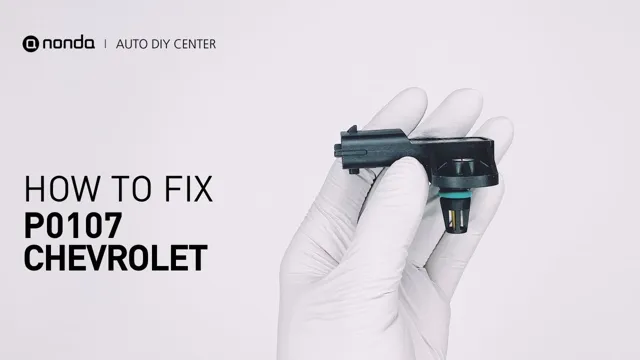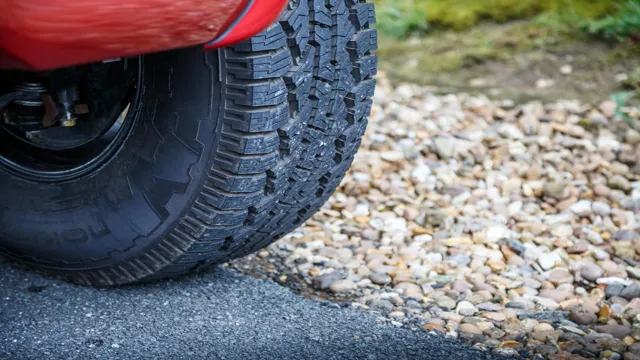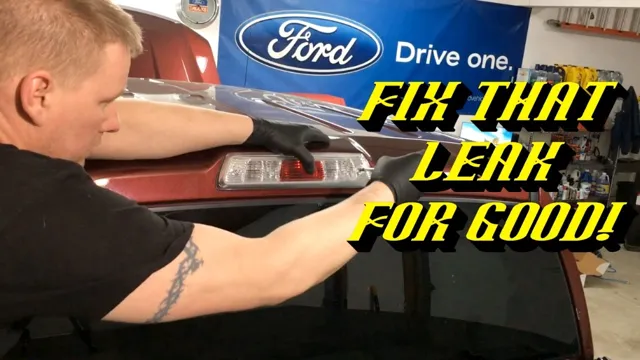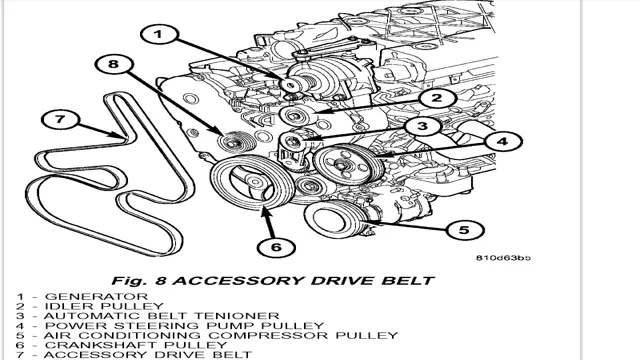5 Simple Steps to Fix P0107 Code in Your Car Like a Pro!
Have you ever stumbled upon your car’s check engine light and wondered what to do next? Well, do not panic; you are not alone. Car owners around the world face similar situations every day. While the check engine light can turn on due to several reasons, an error code P0107 indicates an issue with the MAP (Manifold Absolute Pressure) sensor.
This sensor monitors the engine’s performance, ensuring the fuel-air mixture remains optimized. A faulty MAP sensor can negatively affect the vehicle’s fuel efficiency, power output, and emissions. However, if you are wondering how to fix code P0107, you have come to the right place.
In this guide, we will walk you through the steps required to diagnose and correct the issue, getting your vehicle running efficiently once again.
What is Code P0107?
Are you wondering how to fix Code P0107? This trouble code indicates a problem with the Manifold Absolute Pressure (MAP) sensor circuit, which is a component that measures the amount of air pressure in the engine’s intake manifold. The issue could stem from a faulty MAP sensor, a malfunction in the wiring, or a problem with the sensor’s power supply. To fix this problem, you’ll first want to test the MAP sensor itself to see if it is functioning correctly.
If it isn’t, you’ll need to replace it. If the sensor is fine, then you’ll want to check the wiring and connections for any signs of damage or corrosion. In some cases, you may need to replace the wiring altogether.
Whatever the cause, make sure to address the issue as soon as possible to avoid further damage to your engine. By fixing Code P0107, you’ll help ensure that your car is running smoothly and efficiently.
Understanding the OBD-II Code
Code P0107 is an OBD-II diagnostic trouble code that is related to the Manifold Absolute Pressure (MAP) Sensor. This code is typically triggered when the voltage output from the MAP Sensor falls below the expected range as set by the manufacturer. The MAP Sensor measures the air pressure inside the intake manifold of the engine, which is then used by the Engine Control Module (ECM) to calculate the optimal fuel and air mixture to be injected into the engine.
When the MAP Sensor fails, it can cause a range of issues, including poor fuel economy, decreased engine power, and increased emissions. It’s important to address this issue as soon as possible to avoid further damage to your vehicle. If you are experiencing any symptoms related to Code P0107, it’s best to have your vehicle diagnosed by a professional mechanic.
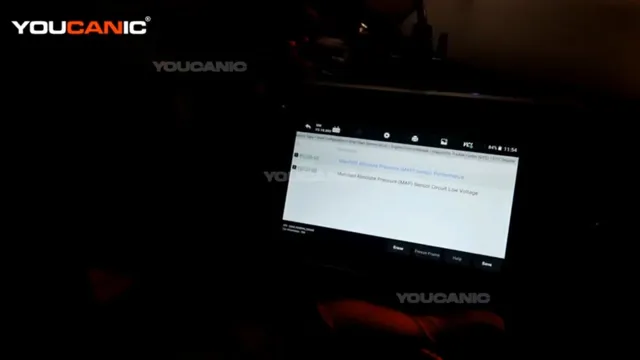
Symptoms of Code P0107
Code P0107 is a diagnostic trouble code that indicates a problem with the manifold absolute pressure sensor in a vehicle’s engine management system. This sensor measures the amount of air entering the engine and sends this information to the engine control module, which adjusts the air-fuel mixture accordingly. When there is an issue with the MAP sensor, the engine performance can be affected.
Symptoms of code P0107 can include rough idling, stalling, decreased fuel efficiency, and even engine misfires. In some cases, the check engine light may also come on. If you experience any of these symptoms, it’s important to have your vehicle inspected and diagnosed by a qualified mechanic to determine the root cause of the problem.
Ignoring these symptoms can lead to more serious engine damage and costly repairs down the line.
Diagnosing Code P0107
If you’re experiencing trouble with your vehicle and the check engine light is on, it’s possible that you’re dealing with a P0107 error code. This code is related to the mass air flow (MAF) sensor, which plays a crucial role in your engine’s function. A malfunctioning MAF sensor can cause issues like reduced engine power and decreased fuel efficiency.
To diagnose the problem, start by checking the MAF sensor’s wiring and connections. If those appear to be in good condition, consider testing the sensor itself with a multimeter to see if it’s within the proper voltage range. If these steps don’t solve the problem, there could be an issue with the sensor’s circuitry or the powertrain control module.
It’s important to diagnose and address P0107 quickly to prevent further engine damage and ensure proper performance. By fixing code P0107, you can rest assured that your vehicle will be running smoothly and efficiently once again.
Using OBD-II Scanners and Diagnostic Tools
If you are facing issues with your car’s engine performance and the check engine light is on, you may need to use an OBD-II Scanner or diagnostic tool to diagnose the problem. One of the common codes that can arise is P0107, which indicates a problem with the manifold absolute pressure (MAP) sensor. This sensor helps control the fuel system and can affect your car’s acceleration and fuel economy.
If you suspect that the MAP sensor is faulty, you can use an OBD-II scanner to retrieve the code and then proceed to test the sensor. One simple way to test the MAP sensor is to use a vacuum pump to apply pressure and measure the change in output voltage. If the sensor is working properly, the voltage should change proportionally to the pressure applied.
If there is no change in voltage, the sensor may need to be replaced. It’s essential to address code P0107 promptly because a faulty MAP sensor can result in poor fuel economy, increased emissions, and even engine damage if left unaddressed. By using an OBD-II scanner and diagnostic tools, you can identify and fix the issue before it becomes a severe problem.
If you are uncomfortable testing or replacing the sensor yourself, don’t hesitate to seek the help of a professional mechanic to ensure that your car is functioning correctly.
Inspecting the Manifold Absolute Pressure Sensor
Diagnosing Code P0107 can be a sign that the Manifold Absolute Pressure (MAP) sensor may have an issue that needs attention. The MAP sensor is a vital component of the engine control system, providing information on the air pressure in the intake manifold to the engine control module. When code P0107 appears, the engine may not run properly due to incorrect air/fuel ratios, low power, stalling, and poor acceleration.
Inspecting the MAP sensor can reveal whether it is dirty, damaged, or faulty. One effective method of inspection is to use a digital multimeter to check the voltage and ground connections. An inappropriate voltage reading can indicate an issue with the sensor.
A visual inspection of the vacuum hoses and wiring connections for damage can help identify issues. Replacing the damaged sensor may be the solution. Remember that the MAP sensor is a vital component, and ignoring issues can result in severe vehicle problems.
Thus, timely diagnosis and repair are critical to maintaining the engine’s performance.
Checking the Vacuum System
Code P0107 is a common issue found in the vacuum system of vehicles. It indicates that the manifold absolute pressure (MAP) sensor is reading a signal lower than expected. This can be caused by a variety of issues, including a faulty MAP sensor, a vacuum leak, or a clogged air filter.
If you’re experiencing this issue, it’s crucial to check the vacuum system thoroughly for any potential problems. One way to do this is to use a handheld vacuum gauge to test the vacuum pressure in the lines and the intake manifold. If the pressure is too low, there may be a leak or a clog in the system.
In this case, you’ll need to visually inspect the lines and connections to pinpoint the issue. It’s essential to diagnose and fix Code P0107 promptly as it can affect the performance and efficiency of your vehicle. So, be sure to get your vehicle checked out by a professional mechanic to keep it running smoothly.
Fixing Code P0107
If you’re experiencing the dreaded Code P0107, don’t panic just yet. This code essentially means your vehicle’s Manifold Absolute Pressure (MAP) sensor is reading too low. This can lead to decreased fuel efficiency and an overall decrease in performance.
However, there are steps you can take to fix it. Firstly, you’ll want to check the sensor’s electrical connector for any signs of damage or corrosion. If it seems to be in good condition, you can test the sensor itself by checking its voltage output with a multimeter.
If the sensor is faulty, replacing it should solve your problem. However, if the sensor seems to be working correctly, you may need to check the vacuum hoses and intake manifold for any leaks or blockages. With a little bit of troubleshooting, you should be able to fix Code P0107 and get your vehicle running like new again.
Cleaning or Replacing the Manifold Absolute Pressure Sensor
If your car’s check engine light is on, and you’re seeing a code P0107, then it might be time to clean or replace your manifold absolute pressure sensor. This sensor helps your car’s engine control module (ECM) determine the air pressure entering the engine, which is crucial for determining fuel delivery. If the sensor is dirty or faulty, it can signal to the ECM that there is low air pressure and therefore low fuel delivery, resulting in poor engine performance and fuel economy.
Cleaning your sensor might do the trick, but if it’s completely faulty, then a replacement is necessary. Don’t ignore this issue, as a malfunctioning MAP sensor can lead to further engine damage down the road.
Repairing or Replacing the Vacuum System Components
Repairing or replacing the vacuum system components can help fix the error code P0107, which indicates a problem with the Manifold Absolute Pressure (MAP) sensor. This is a crucial sensor that measures the pressure inside the intake manifold and sends this information to the Engine Control Module (ECM). If the MAP sensor fails or malfunctions, the ECM may receive incorrect data, leading to various issues such as poor fuel economy, rough idling, and reduced engine performance.
To resolve this issue, you can start by checking the vacuum lines and hoses for leaks, cracks, or clogs. If you find any, replace them with new ones to ensure adequate vacuum pressure to the MAP sensor. If the problem persists, then you may need to replace the MAP sensor itself or the entire vacuum system to restore normal engine function.
It’s always best to consult with a professional mechanic to diagnose and fix any vacuum system issues to avoid further damage to your vehicle.
Preventing Future Occurrences of Code P0107
If you’ve encountered the OBD-II code P0107, then you know it can be a headache to resolve. However, there are steps you can take to ensure it doesn’t happen again. The code refers to a fault in the Manifold Absolute Pressure (MAP) sensor, which is responsible for measuring the air pressure within the intake manifold and transmitting this information to the engine control module (ECM).
To prevent future occurrences of code P0107, make sure to conduct regular maintenance on your vehicle, such as inspecting and cleaning the MAP sensor. Additionally, be wary of conditions that may cause the sensor to malfunction, such as excessive moisture or oil buildup. Finally, consider investing in a high-quality MAP sensor that is built to last and can provide accurate readings, reducing the likelihood of any future issues.
By taking these steps, you can help avoid future headaches caused by code P0107 and ensure your vehicle runs smoothly for years to come.
Conclusion
In conclusion, fixing code P0107 is no small feat. However, with a bit of determination, technical know-how, and a dash of creativity, you can get your engine purring like a contented kitten once more. Think of it like navigating a maze: you may encounter some dead ends and false starts, but stick with it, and the solution will eventually reveal itself.
So roll up your sleeves, grab a cup of coffee, and get ready to tackle this beast head-on. With the right attitude and approach, you’ll be basking in the satisfaction of a job well done in no time!”
FAQs
What does code P0107 mean?
Code P0107 refers to a malfunction in the Manifold Absolute Pressure (MAP) sensor circuit, which can affect the engine’s performance and fuel efficiency.
What are the symptoms of a P0107 code?
Symptoms of a P0107 code may include decreased engine performance, poor fuel efficiency, hesitation or stalling, rough idling, and the illumination of the Check Engine light.
How do you diagnose a P0107 code?
To diagnose a P0107 code, a mechanic may use a scan tool to access the vehicle’s onboard computer and check for any stored trouble codes. They may also physically inspect the MAP sensor and its wiring for any damage or malfunction.
What are some possible causes of a P0107 code?
Possible causes of a P0107 code may include a failed MAP sensor, a vacuum leak in the intake manifold, damaged or corroded wiring or connectors in the MAP sensor circuit, or a failed Engine Control Module (ECM).
How can you fix a P0107 code?
To fix a P0107 code, a mechanic may first inspect and repair any damaged or corroded wiring or connectors in the MAP sensor circuit. If the MAP sensor itself is faulty, it may need to be replaced. In some cases, fixing a P0107 code may also require the replacement of the ECM or other related components.

